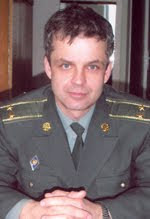Dear readers,
Not long ago I visited Lützen, a very interesting place in
Saxony that is closely connected with the history of Sweden and the Thirty Year’s War (1618–1648). It
attracts many Swedish visitors who come here to see a monument and the “Swedish stone” located
on the spot where their famous King Conqueror Gustavus Adolphus was killed on 16 November
(N.S.), 1632, in the Battle of Lützen. This battle, which was one of the most decisive battles of the
war, was fought between the army of the Holy Roman Emperor Ferdinand II, headed by the Roman
Catholic General Albrecht Wenzel Eusebius von Wallenstein and the Protestant army, led by the Swedish
king Gustavus Adolphus. Gustavus Adolphus was killed when, at a crucial point in the battle,
he became separated from his troops while leading a cavalry charge into a dense smog of mist and
gunpowder smoke. After his death, his wife kept his body, and later his heart, for over a year in the
castle of Nyköping. His remains (including his heart) now rest in Riddarholmskyrkan in Stockholm. In
February 1633, following the death of the king, the Swedish Riksdag of the Estates decided that
his name would from this time forth be Gustav Adolf the Great. No such honor has been bestowed on
any other Swedish monarch before or since. At the spot where Gustavus Adolphus fell, a granite
boulder was placed on the day after the battle. A canopy of cast iron was erected over this “Swedish
stone” in 1832, and a chapel, built by design of Swedish architect Prof. Lars Wahlmann, near the site, was dedicated on 6 November 1907.














